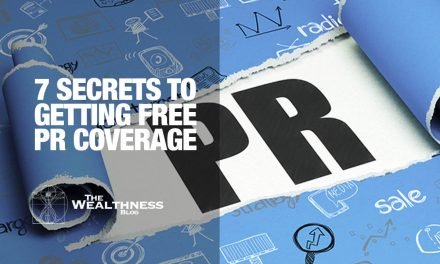Do you wish you could come up with the next fresh product idea that could be patented and sold?
Does it seem like all the good product ideas are already out there? Do you feel that you are held back because youre not an inventor or an engineer or you are simply not the creative type? If you have answered yes to any of these questions, youre thinking about new product development in the wrong way!
Its the Application, not the Idea
Few traders know that a patent is the protection of the application of an idea, and not of the idea itself. Simply put, an idea cannot be patented. For example, you cannot patent the idea of tying cables, but you can patent a specific type of cable tie which works using an arrangement of parts or mechanism that you yourself have invented. You may even use patented parts within your design, provided you give credit to the patent holders where due.
First Identify a Problem, Then Find a Solution
This concept should open an entire new world if you were not aware of this differentiation. For example, you could visit a home decor shop and observe which are the hottest selling products. Observe what makes the product good and any problems associated with it, then purchase it to inspect it in more depth in the comfort of your home or workshop, and identify how you can improve it.
Or, think about products that you use in your everyday life that dont work quite right, objects where you may have to create a work-around. Its quite possible that your work-around is a patentable design change. For example, think about rolling luggage, introduced into general use in the late 1980s. According to Wikipedia, Northwest airline pilot Bob Plath hated lugging his heavy overnight bag and flight bag through airports around the world. So, he tinkered around in his garage until he found a way to attach wheels to his pilots bag. Wherever Bob Plaths took his wheeled luggage, everyone wanted one. The company, TravelPro, was established to fill the demand. TravelPro now holds 15 patents on rolling luggage mechanisms.
Look around and you will find that theres almost always a way to improve on something. For example, most parents find the umbrella stroller, a lightweight, folding baby stroller, to be a huge improvement over larger, difficult to transport strollers. However, because of the three wheel design of most umbrella strollers, they are a bit unstable when transferring a child in or out, especially when you hang bags on the stroller as well. A creative mom, Dana Lowey, invented a kickstand that attaches to most brands of umbrella strollers and keeps the stroller from tipping, This innovation may seem rather small but parents of young children would probably vote to give this woman a Nobel prize. And of course, since Danas contribution to stroller effectiveness, there have been more and more versions and modifications to the kickstand assembly as well as versions of kickstands that are now already attached to umbrella strollers.
Once you have identified a successful improvement or invention, it is time to prototype it, test it with family and friends, evaluate its effectiveness, get it patented, and finally get it manufactured.
Types of patents
Of the three types of patents available, utility, design and plant, your new twist on an existing product will be considered either a utility patent or a design patent.
- Utility patent any new and useful process, machine, article of manufacture, or composition of matter, or any new and useful improvement thereof;
- Design patent new, original, and ornamental design for an article of manufacture.
Once you have your thoughts on paper, you will file for a patent in your country. After you achieve patent pending status, you can move from paper to production, then think about how to improve on your improvement!
Bottom Line
Put your observation and problem solving skills to work to develop new products for your marketplace.
An introduction to patents
If you have a new product idea, you may think you should have the idea patented so you can make more money from it by obtaining the exclusive right to manufacture it and possibly sell or license the right to someone else. If you are going to think about patents, you need to have the facts straight.
The reason for a patent
There is a common misconception that patents are the permission to produce and resell a product. A patent is the right in relation to an invention or innovation granting the owner protection against copying or unauthorised use. The purpose of obtaining a patent is to prohibit anyone else from benefiting from your patent without your express permission to do so, and to gain a competitive advantage or monopoly from your unique invention; the patent excludes others from using your product innovation. As long as your idea doesnt infringe on someone elses patent you are free to benefit from it in the marketplace.
You should note that ideas are not patentable; it is the application and/or design of your idea that are patentable.
For example, You cant patent the idea of a car that runs using sugar. You can, however, patent a specific type of engine which runs using sugar its not the idea, its the application. (Read our related article on developing new applications to discover how this simple concept can lead to expanded product innovations in your marketplace.)
Types of patents
Although patent law varies from country to country (usually in terms of innovators rights), there are three generally accepted types of patents available:
- Utility patents may be granted to anyone who invents or discovers any new and useful process, machine, article of manufacture, or composition of matter, or any new and useful improvement thereof;
- Design patents may be granted to anyone who invents a new, original, and ornamental design for an article of manufacture; and
- Plant patents may be granted to anyone who invents or discovers and asexually reproduces any distinct and new variety of plant.
Defining innovation
A patent may be granted only for an innovation that satisfies the following conditions:
- the invention is new. An invention shall be taken to be new if it does not form part of the state of the art. The state of the art of a patent application is comprised of all public disclosures that were disclosed before the date of filing of a patent;
- the application must be ingenious enough not to be obvious to others in the field;
- It involves an inventive step;
- It is capable of industrial application;
- The grant of a patent for it is not excluded by being contrary to public policy or law.
Patent Search
Before you go to the time, effort and cost of filing an application, you should do a patent search to be sure that no one else has already filed a patent claim on the innovation that you wish to patent. Every countrys patent office offers the ability to do patent searches. However, given the very specific and complex nature of patent searches, you may wish to do a preliminary search on your own and, if you find no problems, hire a patent attorney to complete a more comprehensive search on your behalf. You may also want to search to be sure that your proposed application does not infringe on anyone elses patent. For a full guide on UK patents visit the UK Intellectual Property Office website.
Patent Application
You obtain a patent by applying to your countrys patent office. Your application will need to include a detailed description of your innovation along with any necessary drawings or engineering diagrams.
Every country has a procedure for reviewing patent applications and rendering a decision, along with a process for appealing decisions.
Patent Issue
Patents are typically issued for 20 years. Once you have received a patent, you must label your product with the patent number and date of issue in order to be able to protect your invention from infringement. Once you have filed your patent application, you may label your product with a patent pending notice but this notice has no legal effect; it simply warns that you consider the invention to be patentable and able to be protected from infringement.
International Patents
Patent laws vary from country to country and you have to file for a patent in each country where youre interested in selling or manufacturing your product. However, the Paris Convention for the Protection of Industrial Property and the Patent Cooperation Treaty make it possible to file for a patent in over 100 countries at the same time as well as providing you protection rights in those countries, even if you are not a citizen.
Obtain Patent Counsel
The information in our primer is the least that you need to know to begin the patenting process. If you believe you have a patentable invention, the money you spend on able patent counsel will be well worth it.










